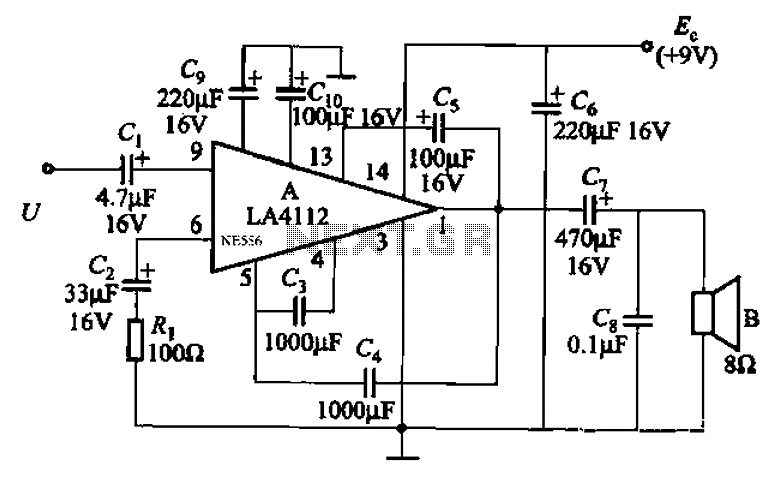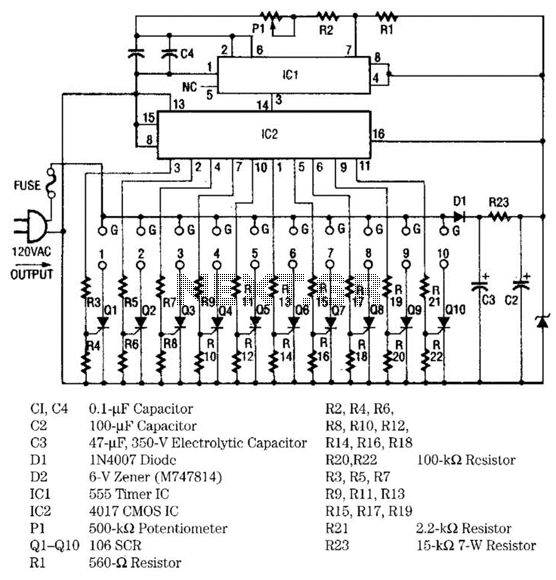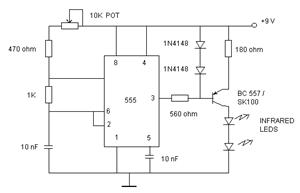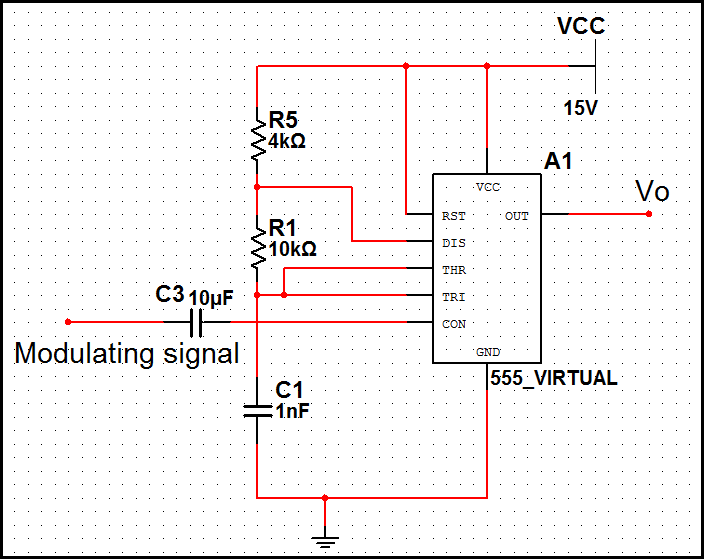
Make this Astable Multivibrator Blinker Circuit Using NAND Gates

An astable multivibrator is an electronic configuration that generates continuous alternating high and low pulses from two outputs operating in tandem. The IC 4093 consists of four individual NAND gates in one package, specifically Schmitt trigger types, which provide hysteresis at their outputs in response to input signals. In the circuit, gate N1 and the associated passive components R3 and C1 form the basic oscillator stage. The output of N1 produces alternating square wave pulses with a fixed mark and space ratio. The pulses generated at the output of N1 are fed into the next NAND gate, which is configured as an inverter by shorting its input pins. All the inputs of the gates are short-circuited, allowing them to function as inverters. The outputs of these gates can directly support LEDs, which are connected to the outputs and blink in response to the astable pulses.
The astable multivibrator circuit utilizing the IC 4093 is designed to produce a square wave output without requiring any external triggering. The core of the circuit is formed by the first NAND gate (N1) and its associated resistor (R3) and capacitor (C1). The resistor-capacitor (RC) combination determines the frequency of oscillation, with the values of R3 and C1 directly influencing the time period of the output waveform. The Schmitt trigger configuration of the NAND gates ensures that the output transitions are sharp and free from noise, which is critical for reliable operation.
The output of N1 oscillates between high and low states, creating a square wave signal. This output is then fed into the second NAND gate (N2), which is configured as an inverter. By shorting the input pins of N2, the circuit takes advantage of the inherent properties of NAND gates to produce an inverted version of the output from N1. The cascading of these gates allows for further manipulation of the output signal, ensuring that the desired characteristics of the waveform are maintained.
The remaining NAND gates in the IC can also be used to drive additional outputs or to modify the signal further if needed. The ability to drive LEDs directly from the outputs of the gates is a practical feature of this configuration. Each LED connected to the outputs will blink in synchronization with the oscillation frequency, providing a visual indication of the astable operation. This circuit can be employed in various applications, such as timers, flashers, or pulse generators, showcasing the versatility of the astable multivibrator design.An astable multivibrator is referred to an electronic configuration which is able to generate continuous alternate high and low pulses from a couple of outputs, operating in tandem. The IC 4093 basically consists of four individual NAND gates in one package, these are schmitt trigger types, which means the gates provide some sort of hysteresis at
their outputs in response to the input signals. In the figure, gate N1 and the associated passive parts R3 and C1 form the basic oscillator stage. The output of N1 generates alternate square wave pulses at its output having fixed mark and space ratio. The pulses generated at the output of N1 is fed to the input of the next NAND gate, which is wired up as an inverter by shorting its input pins.
Note that basically the inputs of all the gates are short circuited, thus they all behave as inverters here. The outputs of these gates are able to support LEDs directly at their outputs, so we connect a few of the LEDs at their outputs which dance or blink in response to the astable pulses.
🔗 External reference
The astable multivibrator circuit utilizing the IC 4093 is designed to produce a square wave output without requiring any external triggering. The core of the circuit is formed by the first NAND gate (N1) and its associated resistor (R3) and capacitor (C1). The resistor-capacitor (RC) combination determines the frequency of oscillation, with the values of R3 and C1 directly influencing the time period of the output waveform. The Schmitt trigger configuration of the NAND gates ensures that the output transitions are sharp and free from noise, which is critical for reliable operation.
The output of N1 oscillates between high and low states, creating a square wave signal. This output is then fed into the second NAND gate (N2), which is configured as an inverter. By shorting the input pins of N2, the circuit takes advantage of the inherent properties of NAND gates to produce an inverted version of the output from N1. The cascading of these gates allows for further manipulation of the output signal, ensuring that the desired characteristics of the waveform are maintained.
The remaining NAND gates in the IC can also be used to drive additional outputs or to modify the signal further if needed. The ability to drive LEDs directly from the outputs of the gates is a practical feature of this configuration. Each LED connected to the outputs will blink in synchronization with the oscillation frequency, providing a visual indication of the astable operation. This circuit can be employed in various applications, such as timers, flashers, or pulse generators, showcasing the versatility of the astable multivibrator design.An astable multivibrator is referred to an electronic configuration which is able to generate continuous alternate high and low pulses from a couple of outputs, operating in tandem. The IC 4093 basically consists of four individual NAND gates in one package, these are schmitt trigger types, which means the gates provide some sort of hysteresis at
their outputs in response to the input signals. In the figure, gate N1 and the associated passive parts R3 and C1 form the basic oscillator stage. The output of N1 generates alternate square wave pulses at its output having fixed mark and space ratio. The pulses generated at the output of N1 is fed to the input of the next NAND gate, which is wired up as an inverter by shorting its input pins.
Note that basically the inputs of all the gates are short circuited, thus they all behave as inverters here. The outputs of these gates are able to support LEDs directly at their outputs, so we connect a few of the LEDs at their outputs which dance or blink in response to the astable pulses.
🔗 External reference





